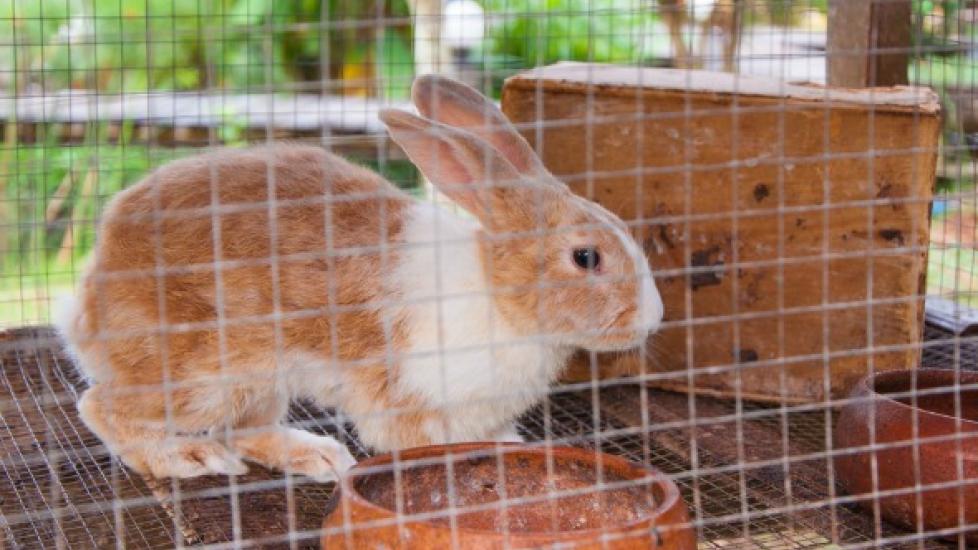Dislocation and Paralysis in Rabbits
Vertebral Fracture or Luxation in Rabbits
Normally, rabbits have very strong hind legs, which they use for hopping. Vertebral fracture or luxation (dislocation) of the limbs in rabbits is a common cause for weakness and paralysis of the hind limbs.
Sometimes, often because of improper handling, caged rabbits can twist their legs right at the junction of their lumbar spine and sacrum (base of the spine), which can result in a vertebral fracture. Some develop what is called a luxation, which is a dislocation that occurs at the lumbar L7 point (the lower spine), though fractures are far more common than luxations. This type of trauma may cause the rabbit to lose control of its bladder function, and possibly lose control of its bowel movements too.
Symptoms and Types
The signs and symptoms often depend on the severity of the condition. The following are some of the more common signs and symptoms:
- An abnormal or unusual stance, including an inability to hop
- Dragging of the legs
- Inability to get up or sit in an upright posture
- Decreased movement in the limbs and tail
- Paralysis or weakening of the limbs
- Trauma to the legs or back
- Pain may be evident
- Signs of lethargy and depression
- Rabbit appears guarded
- Decreased tone in and around the anus, urinary incontinence
- Increased muscle tone in the front limbs to compensate for loss of movement in back limbs)
Causes
The causes for vertebral fracture and luxation are varied and may include:
- Improper handling: When restraining rabbits, it is important to restrain the hind legs and the front legs; holding just one or the other may result in dislocation or fracture
- Surprise reaction: A reflexive movement in response to being startled may cause the rabbit to move or jerk suddenly, resulting in dislocation or vertebral fracture
- Trauma: Injury may occur during medical procedures, such as when a rabbit struggles against being given gas anesthetic and attempts to jump away, falling from the table's height; while a rabbit may initially appear calm, many struggle against medical procedures, so it is important to safely restrain the rabbit prior to induction of any medications
Diagnosis
Because there are several possible causes for weakness and/or paralysis of the hind limbs, your veterinarian will most likely use differential diagnosis. This process is guided by deeper inspection of the apparent outward symptoms, ruling out each of the more common causes until the correct disorder is settled upon and can be treated appropriately. You will need to begin by providing a thorough history of your rabbit's health leading up to the onset of symptoms.
Other causes may include infection with Encephalitozoon cuniculi, central nervous system (CNS) infections, lesions on the CNS, metabolic diseases, or damage to the spinal cord. Your veterinarian will also test the spinal reflexes, along with taking radiograph images to assess any damage to the limbs. These will reveal the condition of your rabbit's spine, and whether the bone is in fact fractured, or has become dislocated from its socket. Magnetic resonance imaging (MRI) can be used to provide the most accurate images of what is going on with the limbs, but this type of imaging is not always available for small animals.
Treatment
If your rabbit is displaying severe paralysis or weakness, and is not able to move or cannot utilize bladder or bowel movements, inpatient care will probably be necessary. Even if you are able to provide home care for your rabbit, activity is often limited to bed rest only. Your rabbit will need to be kept still while it recovers from its injury, with frequent turning to prevent bed sores from forming on the skin (a condition caused by the body lying in one position for too long). Home care will require making sure that the bedding is frequently changed, and a careful diet that is structured to prevent the rabbit from becoming cachectic (a wasting of the body that is caused by loss of appetite). Most rabbits will require hand-feeding during this time, until they are able to feed themselves again.
Your veterinarian may also find it appropriate to prescribe a gastrointestinal agent for your rabbit to protect the stomach lining and reduce the risk of ulcer formation. To help your rabbit through the painful process of healing, pain killers can be prescribed to help reduce its discomfort.
Antibiotics are only advised if secondary infections are present, as their use can be controversial due to secondary complications that have been associated with their use.
Living and Management
The final prognosis is guarded and is dependent on the severity of the trauma and your rabbit's ability to eat and physically recover following the inpatient or home based care. Specially designed wheeled carts may be available for rabbits that recover but that still suffer from long-term paralysis, or paresis (partial paralysis) due to the trauma. Most rabbits with severe trauma to the spinal cord do not regain full mobility, and in some causes euthanasia may be the only humane option.
